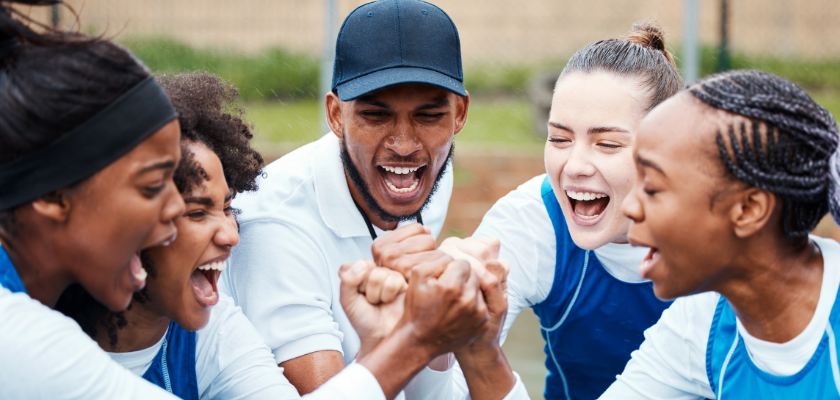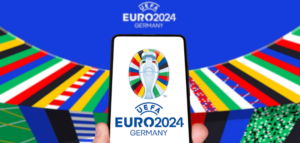
4 Sports Marketing Trends to Improve Performance in 2024
In the ever-evolving sports industry, which is expected to soar to a staggering value of over 623 billion dollars by 2027, keeping pace with consumer demands is paramount.
The huge drive for adaptation and growth requires a blend of both digital and physical sports marketing trends. Major sporting events such as the Rugby World Cup, FIFA World Cup, and Women’s World Cup captivate vast audiences. However, in our AI-powered era, simply hosting events is not enough. The industry is harnessing technological advancements to differentiate and innovate. Such technology not only enhances the fan experience both online and offline but also paves the way for unique marketing opportunities.
Ready to plunge into such sports marketing trends?
1.Delivering Engaging Content Tailored for Female Audiences
Yes, the participation of women has grown rapidly in the sports industry over the last few decades, but there still is an inclination to think of men when it comes to sports.
Almost 50% of women across the globe today are interested in sports, which is a testament to the above statement. The challenge, however, is bringing the stat from almost 50 to 50 or above.
While there are a few solid fans of women’s sports, marketers still need to deliver engaging online and offline content tailored to female audiences. Doing so will spike interest in young women and help you tap into new markets. So it’s a win-win for both.
Now the question is: How do you reach them? A few ways listed below should help!
- Tailor campaigns promoting women’s sports events and highlighting the dedication of female athletes.
- Use social media platforms like Instagram and others to create interactive experiences.
- Show live matches on social media platforms to attract new audiences.
The abovementioned tactics will help you go down a slow and steady path toward attracting audiences. The other way is to develop a few but the most thought-provoking campaigns like DDB NZ. Such campaigns shake the internet and garner attention from the users.
DDB Group NZ’s Thought-Provoking “Correct the Internet” Campaign
DDB, an Auckland-based agency, came up with “Correct the Internet” in January 2023. The concept of this campaign is very simple–to increase the visibility of sportswomen in the industry. However, the approach taken is the key.
The video begins with a young girl asking the internet “Who scored the most runs in Football?”. The internet replies with “Christiano Ronaldo” when the real answer is – Christine Sinclair.
This simple 30-second video states the inconsistencies of the search results, which eventually prove to be disadvantageous for sportswomen to rightfully occupy the space in this competitive market.
Calling this video a mere campaign would be an injustice as the brand smartly urged the users to question this Internet bias. While such campaigns may not occupy a spot in the current sports marketing trends list, they definitely set your brand apart and compel users to think.
2.Leveraging Wearable Technology
Wearable technology is getting better each year and the sports industry is perfect to make the most of it.
While fitness trackers and smartwatches help consumers monitor their health, the data helps brands devise creative ads and campaigns around the data. A few ways, as listed below, might be of help!
- Reach out to brands that make wearables to create unique products for their fan base.
- Connect with athletes and ask them to promote these products on social media channels like Twitter and Instagram.
- Introduce contests and challenges wherein users use their wearables to compete against their favorite athletes in real time.
Wearables are fun for fans to engage with and for athletes to collaborate with.
In both ways, the brand largely benefits, as sports, after all, is one industry that connects people across races, religions, castes, creeds, or demographics. Whether you use it to make your audience engage better or simply as a marketing gimmick is totally your choice!
WHOOP’s In-Game Use of Wearables
How cool is it for a sports brand to get a recognized league’s approval to wear its wearables when playing the sport?
Super cool, right? That’s what WHOOP did.
WHOOP, a wearable tracker worn at all times, collaborated with the
Major League Baseball for its 2017 season, wherein the athletes officially wore the wearables during games in U.S. pro sports.
But but but, how did they get the approval?
Kudos to the brand’s strain metric, which proved an asset for athletes. The WHOOP Day strain metric represents a running total of the athlete’s strain on that day, providing an accurate assessment of a pitcher’s well-being rather than a pitch count. This metric helped athletes understand their bodies better, resulting in higher performance!
It then became the first wearable technology approved by the WTA (Women’s Tennis Association) for in-match use in 2021.
Of the many sports marketing strategies, such strategies leave a deeper mark and a more global imprint in the industry.
3.Collaborating with Brands Fostering Diversity and Inclusivity
Believe it or not, it’s never just about the products. It’s about the underlying story, caring about and catering to your unique needs. This story makes users feel included and brings diversified users together.
Sports, inherently, is an all-inclusive industry. Brands that learn to imbibe this value in their sports marketing campaigns automatically make it to the best sports marketing trends 2023 because inclusion and diversity will always stay in trend.
Also, the concept of inclusivity goes beyond gender neutrality. To stand out in this ever-evolving world of sports, brands must develop products that cater to varying groups of athletes–different castes, creed, religion, sexuality, etc. And as marketers, your job is to collaborate with such brands.
- Feature athletes from different backgrounds in the ads.
- Include personal stories from athletes as part of the campaign.
- Build sports merchandise and products catering to several body types, genders
- and cultural differences.
- Involve fans in the campaign and encourage them to share their sports stories.
- Ensure the content is accessible to all the users.
Fostering inclusivity doesn’t necessarily have to be a mega event. It could also be as simple as adding subtitles to the video campaign so for the specially-abled audience. (Small gesture but big impact!).
However, if you want to leave a bigger mark, devising a movement like the Unified Sports program by the Special Olympics could seal the deal.
Unified Sports Program Promotes Social Inclusion via Sports
As the name suggests, Unified Sports brings people from diverse backgrounds together into a single team. People of all ages, with or without intellectual disabilities are on the same team. Doing so fosters acceptance, inclusion, and challenges the team to function with people from varying backgrounds.
Special Olympics Brazil staff and Rio de Janeiro education officials took this approach down to their schools. The schools took the first step of unifying their physical Ed classes.
Such campaigns hold the power to promote inclusion even among marginalized communities and bridge socioeconomic gaps.
4.Using NFTs (Non-Fungible Tokens) to Engage Fans
Using NFTs is one of the newest trends in the sports marketing industry. How?
Well, NFTs have revolutionized the industry since they enable fans to have their favorite sports player cards to game video clips. One of the key reasons to leverage NFTs is it allows teams to deepen their relationship with fans.
Below are a few ways NFTs allow sports organizations to engage with their followers.
- They offer exclusive member privileges to users, making them a part of important governance decisions.
- Athletes can individually issue their NFT collections and keep their fans hooked.
- Virtual meet-and-greets or customized content with NFT ownership.
- Offers cross promotions wherein influencers and people within the industry can join promotions.
Other than these perks, NFTs help sports organizations make money!
So leveraging it isn’t only the most trendy thing to do but also lucrative. Top Shot’s NFT marketing campaign is a great example of deepening their love for the sport.
NBA Top Shot’s NFT Marketing Campaign
For hardcore sports fans, nothing is more exciting than watching a player’s extraordinary shot transpire live. The NBA not only conceptualized but capitalized by turning such what-a-shot moments into NFTs.
Users can transform these moments into non-fungible tokens and keep revisiting them as many times as they’d like.
The campaign simply allowed fans to buy and trade NFTs of some of the best plays that the NVA had witnessed. This simple strategy drove buyers to find and buy the moments that meant most to them.
The campaign easily made hundreds of millions of dollars.
What a creative way to bank on nostalgia, right?
Conclusion
Yes, we enlisted sports marketing trends to make the most of 2023, but a one-size-fits-all approach doesn’t work so you need to carefully think about your sports brand’s marketing strategy.
Some brands may benefit from organizing engaging live sports events, while others may need to infuse more tech into their marketing campaigns. You can’t always know what benefits your marketing model, so reaching out to sports marketing agencies is vital. With their expertise and experience, they’ll develop marketing campaigns that work! Do a little research, and you’re good to go!





















